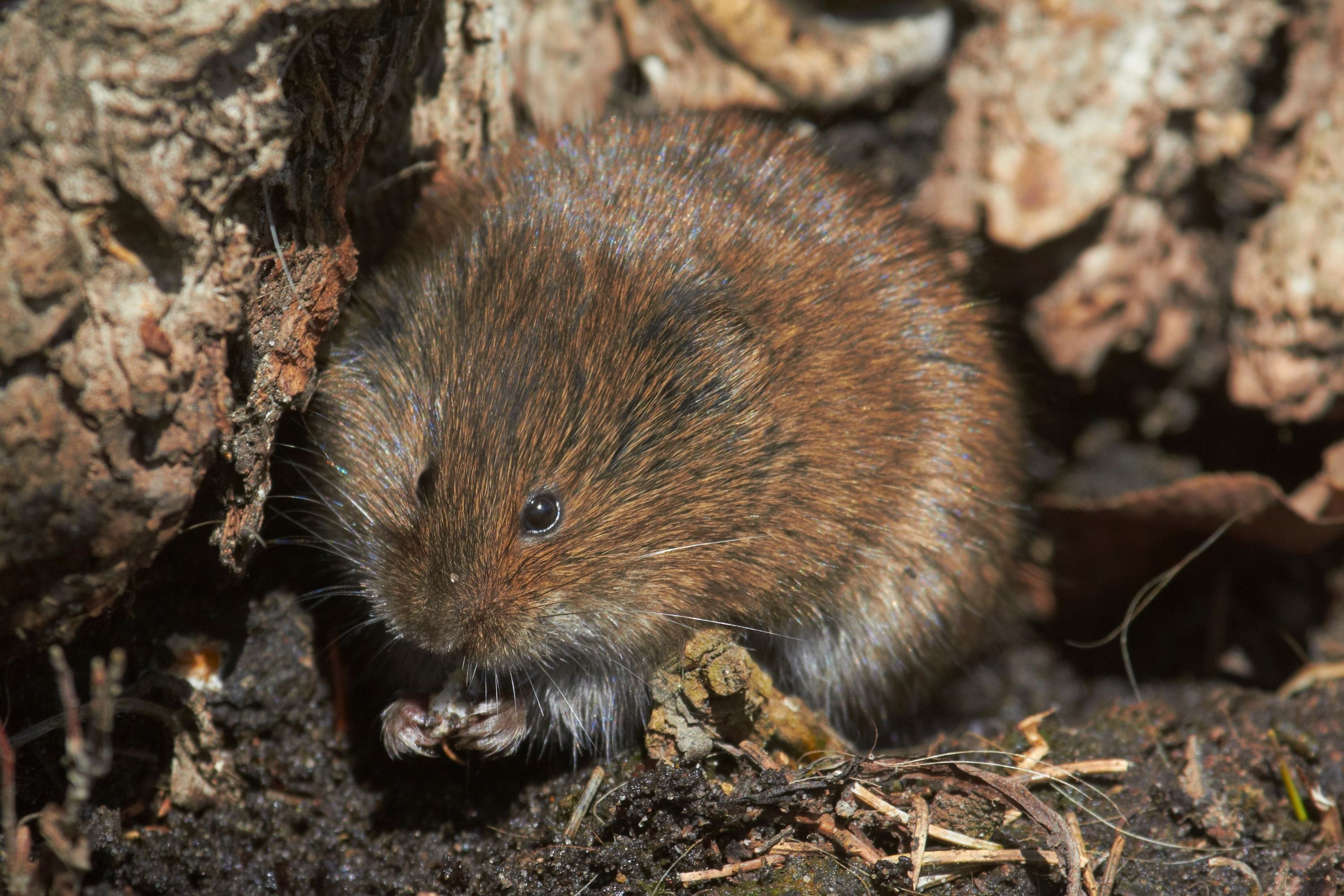Western red-backed vole
(Myodes californicus)

Description
The western red-backed vole (Myodes californicus) is a species of vole in the family Cricetidae. It is found in California and Oregon in the United States and lives mainly in coniferous forest. The body color is chestnut brown, or brown mixed with a considerable quantity of black hair gradually lightening on the sides and grading into a buffy-gray belly, with an indistinct reddish stripe on the back and a bicolored tail about half as long as the head and body. The western red-backed vole was initially described by C. Hart Merriam under its original scientific name Evotomys californicus. The type specimen was obtained at near Eureka, California. It was an adult male collected by Theodore Sherman Palmer on June 3, 1889. The length of the western red-backed vole ranges from 121-165 mm (4.8-6.5 in) overall, with a tail between 34-56 mm (1.3-2.2 in), hindfoot 17-21 mm (0.67-0.83 in), and ear 10-14 mm (0.39-0.55 in). The height ranges between 0.75-0.87 inches (18-21 mm). The species is closely related to the southern red-backed vole (Myodes gapperi), which lives to the north and east of the range of this species, and is redder, with a more sharply bicolored tail. They are differentiated based on a reddish stripe on the dorsum of the western red-backed vole. The western red-backed vole also has characteristic differences in the anatomy of the hard palate. It is found in northern California and western Oregon in the United States. The northern limit is defined by the Columbia River, with the range extending south to around 100 km (62 mi) north of the San Francisco Bay. The range extends from the summits of the Cascade Range in the east, to the Pacific Ocean. They live mainly in coniferous forest. They live in the Transition and Canadian life zones, described by Vernon Orlando Bailey in The mammals and life zones of Oregon. The western red-backed vole lives largely underground in an extensive system of burrows. It feeds primarily on fruiting bodies of hypogeous fungi. These mycorrhizal fungi are the symbionts of the forest trees around it. Rhizopogon vinicolor is one such which is associated with the Douglas-fir (Pseudotsuga spp.). Fruiting of the fungus takes place in well decayed timber when the nutrients are becoming exhausted. Because the fruiting bodies are underground, the spores are not liberated into the air as in most fungal species.
Taxonomic tree:







